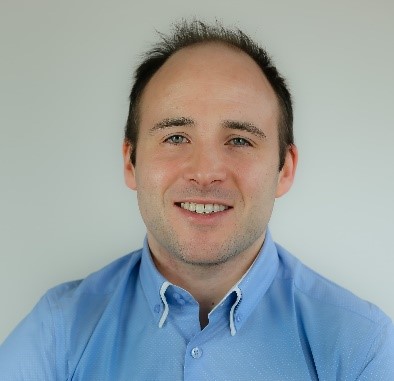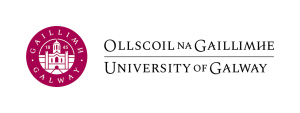Users Council
The membership of the Users Council is as follows:
Class A
Alessandro Lunghi - Trinity College Dublin
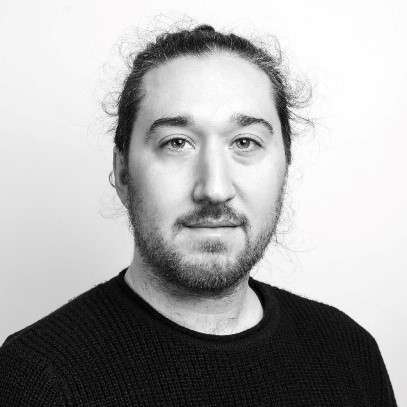
I hold an assistant Prof. position at the School of Physics, Trinity College Dublin, where I lead the group of Quantum Materials Dynamics. I have pioneered the field of ab initio spin dynamics simulations for magnetic molecules, demonstrating that such a method can give quantitative predictions of spin-lattice relaxation in solid-state materials [Science Advances 8 (31), eabn7880, 2022].
My group is also spearheading the development of machine-learning strategies for the design of new magnetic materials for quantum technology applications [Nature Reviews Chemistry 6 (11), 761-781, 2022] and maintaining the opensource code MolForge which enables an initio spin dynamics simulations.
David O'Reagan - Trinity College Dublin
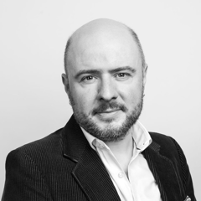
David O’Regan is an Associate Professor in Trinity College Dublin School of Physics. David has worked on diverse problems in electronic structure theory and has won support from agencies including SFI, the IRC, the Royal Irish Academy, and EPSRC. He graduated in mathematics and physics in from NUI Cork, took his Ph.D. in physics at Cambridge, and following research fellowships, David joined Trinity in 2014. The Quantum Theory of Materials Group that he leads focuses on the development of quantum-mechanical approximations and techniques for better understanding the material world.
Specifically, David’s research is dedicated to finding unexpected, innovative ways to transform the accuracy, efficiency, and applicability of theory and simulation software for predicting and understanding material properties using quantum mechanics. He is known for his work on simulating, from the electrons up, systems that are both spatially complex (e.g., disordered crystals or molecules) and harbour strong interactions that are beyond the predictive capacity of standard techniques. David is particularly known for his work on extending and refining the class of methods known as constrained DFT and DFT+U.
Selected publications:
- A. Burgess and D. D. O’Regan, “Flat-plane based double-counting free and parameter free many-body DFT+U”, Phys. Rev. B 110, 205150 (2024). https://doi.org/10.1103/PhysRevB.110.205150
- Z. Chai, R. Si, M. Chen, G. Teobaldi, D. D. O’Regan, and L.-M. Liu, “Minimum tracking linear response Hubbard and Hund corrected Density Functional Theory in CP2K”, J. Chem. Theory Comput. 20, 20, 8984 (2024). https://pubs.acs.org/doi/10.1021/acs.jctc.4c00964
- L. MacEnulty, M. Giantomassi, B. Amadon, G.-M. Rignanese, and D. D. O’Regan, “Facilities and practices for linear response Hubbard parameters U and J in Abinit”, Electron. Struct. 6, 037003 (2024). https://iopscience.iop.org/article/10.1088/2516-1075/ad610f
Class B
Cara-Lena Nies - Tyndall National Institute
Cara-Lena Nies is a postdoctoral researcher in the Materials Modelling for Devices group in Tyndall National Institute. Her research focus in on designing advanced materials for environmental applications, with a particular interest in application-targeted control of the surface morphology to achieve optimal material performance.
Research interests: surface chemistry, growth morphology, catalysis, 2D materials
Selected publications
- C.-L. Nies, S. K. Natarajan and M. Nolan. “Control of the Cu morphology on Ru-passivated and Ru-doped TaN surfaces–promoting growth of 2D conducting copper for CMOS interconnects.” Chemical Science (2022), 13, 713-725. doi:10.1039/D1SC04708F;
- C.-L. Nies, and M. Nolan. “Prediction of Co and Ru nanocluster morphology on 2D MoS2 from interaction energies.” Beilstein Journal of Nanotechnology (2021), 12, 704-724. doi:10.3762/bjnano.12.56
Tobias Kraemer - Trinity College Dublin
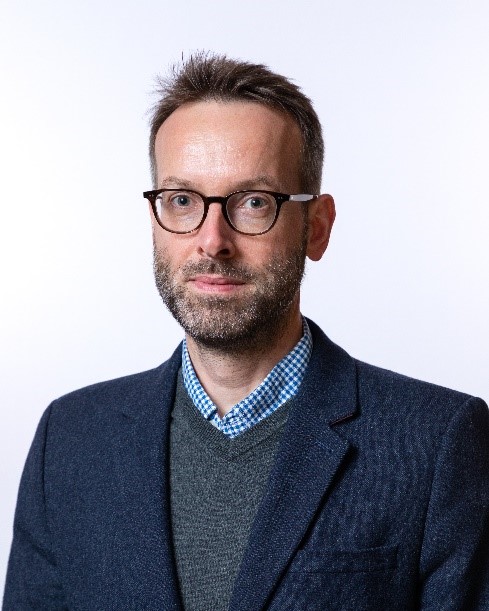
Tobias completed his PhD in Computational Inorganic Chemistry at University of Oxford in 2011 working with Prof. John E. McGrady. After stints as a postdoctoral research associate with Prof. Frank Neese at MPI CEC (2012-2013) and Prof. Stuart A. Macgregor at Heriot Watt University (2013-2017), he was appointed as a lecturer at Maynooth University. In January 2025 Tobias became Assistant Professor at Trinity College Dublin. His group’s research interests centre around the electronic structure of inorganic systems, including transition metal catalysis, main group chemistry and bioinorganic chemistry. Quantum chemistry and theoretical spectroscopy are essential tools for the group that provide insight into the complex bonding and reactivity of molecules drawn from the above areas. I have been an active user of the ICHEC HPC architecture for the last 7 years, with a significant number of Class C and B projects completed. I am looking forward to working with the ICHEC community and management.
Selected publications
- Tobias Krämer, Matthew R. Gyton, Itxaso Bustos, Matthew J. G. Sinclair, Sze-yin Tan, Christopher J. Wedge, Stuart A. Macgregor, and Adrian B. Chaplin,
- "Stability and C–H Bond Activation Reactions of Palladium(I) and Platinum(I) Metalloradicals: Carbon-to-Metal H-Atom Transfer and an Organometallic Radical Rebound Mechanism", J. Am. Chem. Soc., 2023, 145, 14087.
- Suman Debnath, Shoba Laxmi, Olivia McCubbin Stepanic, Sebastian Y. Quek, Maurice van Gastel, Serena DeBeer, Tobias Krämer, and Jason England.
Ji Liu - Tyndall National Institute
Dr. Ji Liu is currently a postdoc researcher at Tyndall National Institute, University College Cork (2019 – present). I have demonstrated a proven track recork in simulation of surface chemistry. I lead the Materials Modelling for Devices (MMD) Group research activities in atomic scale understanding of depositing metals and metal oxides (DOI: 10.1021/acs.jpcc.3c02933; 10.1039/D1NR05568B) and developed a deep research expertise in modelling of metal catalysts for different chemistries from my PhD (DOI: 10.1016/j.electacta.2018.06.041). From 2019, I have several awarded HPC projects from ICHEC (one class B and several class C), and EuroHPC (two EuroHPC JU projects and one DECI project). As an ICHEC Board member (2024 - ). Happy to be a member of ICHEC and contribute to the HPC infrastructure in Ireland.
Class C
Gerald Gallagher
I am a Lecturer in Mechanical Engineering at TU Dublin Bolton Street and Chartered Mechanical Engineer. I currently teach across different fields, including heat and mass transfer, fluid mechanics, thermodynamics, robotics and control, mechanical design, and material science. I supervise both undergraduate and postgraduate (Masters) research projects, primarily in computational fluid dynamics (CFD) applied to multiphase flows, sustainable design, and renewable energy technologies. My research interests are in multiphase CFD simulation and parallel programming, involving the application of advanced CFD methods to different engineering problems, multiphase flows, fluid-structure interaction, and the development of efficient and validated CFD codes, with my current research focusing on the development of a GPU-enabled multiphase CFD software package for simulating deformable red blood cells in flow using the lattice Boltzmann and immersed boundary methods. I am engaged with industry on CFD applied to complex engineering problems, including multiphase plunging jet and bubbly flow simulations for wastewater treatment, electro-chemical battery simulations for electric vehicles, and hydrogen fuel cell cooling simulations for electric vehicle and aviation applications.
I am the co-founder of the TU Dublin CFD Research Group, and also the co-founder and leader of the EUt+ ESSLab+ Simulation and Sustainability (S2) Scientific Interest Group. I am involved in Management Committee duties for the European Network for the Mechanics of Matter at the Nano-Scale (MecaNano) and Open Network on DEM Simulations (ON-DEM) COST Actions, and I review manuscripts in the fields of the CFD, fluid dynamics, the lattice Boltzmann method, and heat transfer for the Springer Forum for Interdisciplinary Mathematics and Computers and Geosciences.
Key Publications:
- Gerald Gallagher, Fergal J. Boyle; Morton-ordered GPU lattice Boltzmann CFD simulations with application to blood flow. AIP Conf. Proc. 7 June 2024; 3094 (1): 030010. https://doi.org/10.1063/5.0211000
- Gerald Gallagher, Fergal J. Boyle; Optical Tweezers CFD Simulations using a Coupled Lattice Boltzmann-Immersed Boundary Spring-Particle Red Blood Cell Model. Bioengineering in Ireland, Section of Bioengineering of the Royal Academy of Medicine in Ireland. 27 January 2024
Edmund Gilbert - Royal College of Surgeons in Ireland
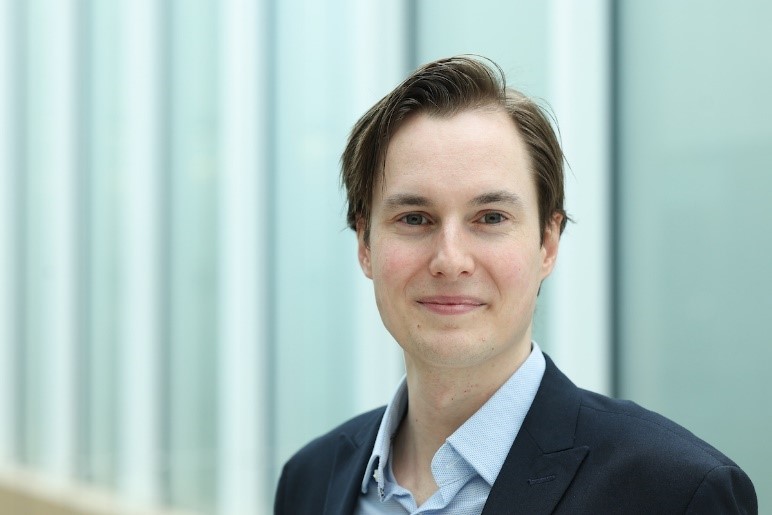
Edmund is a Lecturer in Human Genetics and Computational Biology at RCSI, Dublin. His research interests lie in population genetics and reconstructing population history to elucidate the origins of disease risk. This work focuses on the identification of regions of the genome shared by individuals due to common history, and using this to either understand population history or shared disease risk.
Selected publications
- Revealing the recent demographic history of Europe via haplotype sharing in the UK Biobank, PNAS, 2022, DOI: 10.1073/pnas.2119281119
- The Newfoundland and Labrador mosaic founder population descends from an Irish and British diaspora from 300 years ago, Comms Biol, 2023, DOI: 10.1038/s42003-023-04844-9
- The genetic landscape of polycystic kidney disease in Ireland, Eur J Hum Genet, 2021, DOI: 10.1038/s41431-020-00806-5
Dr Sarah Guerin (Chair) - University of Limerick
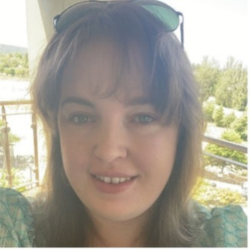
Dr Sarah Guerin graduated in 2015 with a BSc in Applied Physics from the University of Limerick, going on to complete her PhD in piezoelectric modelling with Prof Damien Thompson. After receiving her PhD in 2018, her postdoctoral research was carried out in the modelling theme of SSPC, the Science Foundation Ireland Research Centre for Pharmaceuticals, in which she is now a funded investigator. She now runs her research group, the Actuate Lab in the Department of Physics and Bernal Institute in the University of Limerick, Ireland. She currently works on both in-silico and ex-silico engineering of biomolecular crystals, primarily for application areas in eco-friendly sensing and pharmaceuticals. She currently works with a large number of international research groups as a world-leader in computationally predicting the electromechanical properties of novel molecular crystals. She has been awarded the British Association of Crystal Growth Young Scientist of the Year Award, the IEEE Dilip Das Gupta Memorial Award, and the SFI Early Career Researcher of the Year. Her research has been published in journals such as Nature Materials, Advanced Materials, Nature Communications, and ACS Nano, and has been featured on the cover of the Journal of the American Chemical Society (JACS), and Accounts of Materials Research.
Selected Publications
Kiely, Evan, Reabetswe Zwane, Robert Fox, Anthony M. Reilly, and Sarah Guerin. "Density functional theory predictions of the mechanical properties of crystalline materials." CrystEngComm 23, no. 34 (2021): 5697-5710.
Guerin, Sarah, Joseph O’Donnell, Ehtsham U. Haq, Cian McKeown, Christophe Silien, Fernando MF Rhen, Tewfik Soulimane, Syed AM Tofail, and Damien Thompson. "Racemic amino acid piezoelectric transducer." Physical review letters 122, no. 4 (2019): 047701.
Bhattacharya, Suman, Pierre-Andre Cazade, Krishna Hari, Tara Ryan, Lynette Keeney, Charlie O'Mahony, and Sarah Guerin. "Harvesting of shear piezoelectricity in a molded multicomponent crystal disc." Applied Materials Today 39 (2024): 102344.
Viswanath Vittaladevaram - University of Galway
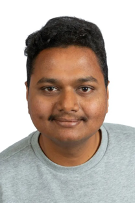
Viswanath Vittaladevaram is a PhD Researcher [3rd year] in computational chemistry at the University of Galway. Viswanath’s research endeavours are driven by a desire to develop innovative methods that can effectively replicate and predict the behavior of biological systems, paving the way for a more human and ethical approach to scientific research.
Viswanath is a computational chemist with a passion for exploring alternative approaches to animal testing. By developing sophisticated computational models that can accurately predict the outcomes of animal experiments, he hopes to eliminate the need for live animals in many scientific investigations. Through the power of computational simulations and modelling, he is working to unravel the intricate mechanisms that govern biological processes, from the molecular interactions that underpin cellular function to the complex structures that give rise to tissue formation.
| Name | |
Allesandro Lunghi | lunghia@tcd.ie |
Cara-Lena Nies | Caralena.nies@tyndall.ie |
David O’Regan | David.o.regan@tcd.ie |
Edmund Gilbert | Edmundgilbert@rcsi.ie |
Gerald Gallagher | Gerald.gallagher@tudublin.ie |
Ji Liu | Ji.liu@tyndall.ie |
Tobias Kraemer | kraemert@tcd.ie |
Viswanath Vittaladevaram | v.vittaladevaram1@universityofgalway.ie |

